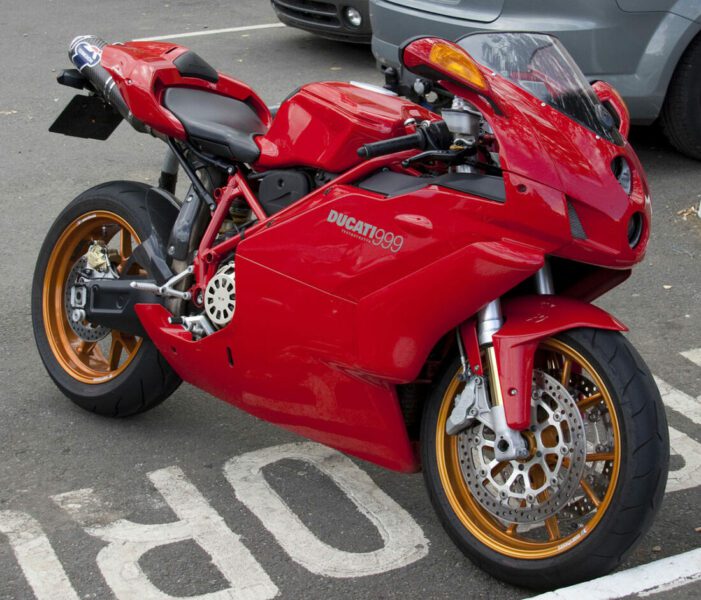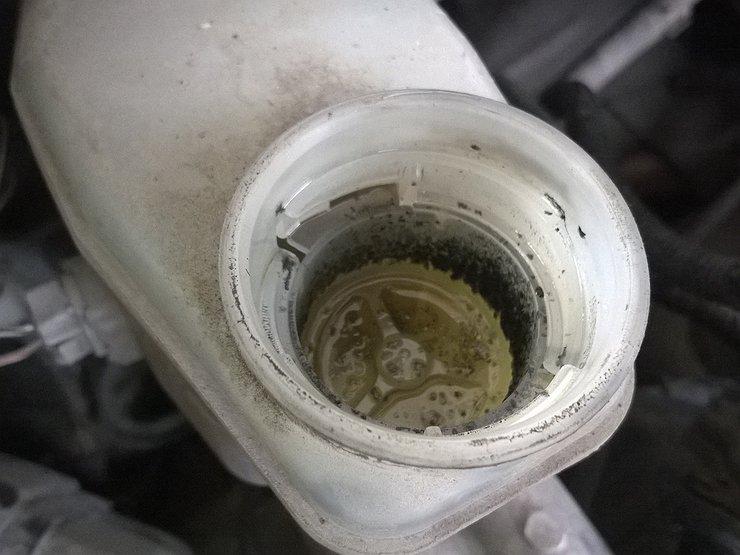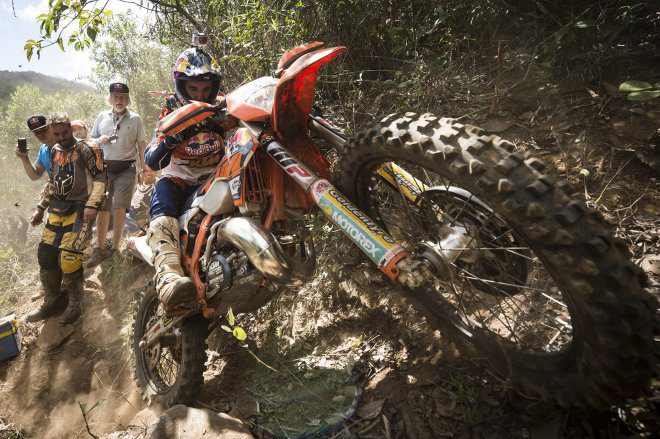
Ducati 999
Previous laps Michelin tires gripped the asphalt like glue. This time, as the new Ducati picks up speed from a full tilt, the rear wheel is slipping and it's hard to prepare for a hand not to disengage the throttle. The Ducati catches the line gently and the roar builds up as I press my head against the small plexus.
The old 916 was pretty intimidating under the same circumstances as I tried today at a press launch in 1994. But it wasn't all that fast.
Over the past eight years, the Bologna-made two-cylinder V (well, we can also say the twin-L) has remained largely unchanged, but still convincingly led the superbike world championships. They increased the engine displacement to 998 cc, developed a radical new head called the Testastretta, and never exceeded the reliability threshold.
Nice, nicer, I don't know
The 916 has been a great product since its inception. The motorcycle is timeless. And, of course, there was already panic at Ducati when it became clear that a replacement needed to be prepared. How to make a motorcycle more beautiful?
At the presentation of the Ducati 999, Ducati President Federico Minoli emphasized that it is the most advanced, technically advanced and most powerful motorcycle Ducati has ever shown! ? With the 999, Ducati is entering a new era.
Ducati designer Pierre Terblanche had the daunting task of creating a worthy successor to Massimo Tamburini's 916. The task is relatively impossible - as if the Sistine Chapel had to be repainted. And today observers share opinions. For many, 916 is a badge that 999 falls short of.
However, the 999 still announces that it is Ducati. Aggressiveness is emphasized by the headlight placed on the floor, complemented by an exhaust system under the seat in a kind of artistically "closed" pot. Around the fuel tank, armor has been cut so that the eyes can see the rear cylinder of the liquid-cooled two-cylinder engine, which breathes through the Testastretta heads through eight valves.
Reaches 124 hp, a "horse" more than before, but this can only be a rounding off in mathematics. At the end of the year, they will show a stronger, backed by the 136bhp 999S, followed by the Biposto. But beware, improvements to the intake, exhaust and ignition and injection electronics have left a strong mark in the mid-range, where the two-cylinder already has an edge over the four-cylinder anyway.
The 916 was the epitome of lightness. Apparently it doesn't go any lower, so the 999 weighs a pound more. There seems to be no new argument to be drawn from the 916 chassis, so the 999 has 15mm longer, now a two-spoke pivot fork at the rear and a chain tension screw to adjust the chain tension on the rear wheel axle. Nice detail. The tubular frame retains the familiar look, but narrower.
The driver's seat is height adjustable by 15 mm. Since the basic dimensions of the frame, pedals (they are five-speed adjustable) and handlebars are the same, the seat change is obvious enough to make you feel more relaxed. But the driver is still staring at the white tachometer. The digital speed display can also display fuel consumption, lap times and more.
No peace
There is nowhere to rest in Misano. I read a speed of 250 km / h on the plain and scored at least 20 more before hitting the brakes in the right place for me. I am therefore very pleased that Ducati has a two-stage dial illumination that zooms in between 100 and 200 rpm and warns of imminent ignition off at 10.500 rpm. The gearbox did not turn on very accurately every time, in some places it was necessary to press the lever twice.
The longer swingarm is supposed to prevent the front from lifting during acceleration and loss of stability during braking. However, the 999 still clings to the rear wheel when accelerating. The front end keeps the Boge non-adjustable shock absorber attached to the handlebars. In the city, drivers will enjoy the more comfortable turning radius.
The 999 handles corners more easily than the 916. Andrea Forni, head of development, commented that moving the rider closer to the center of gravity reduces the moment of inertia. Well, the suspension-sensing suspension that has front and rear Show marks also has its own. The 999 is a quiet bike, and the swingarm should help. The Brembo ready brake kit, however, is a big hit when it comes to downshifting. They claim to have reduced overheating, which is good information for sports.
Ducati 999
TECHNICAL INFORMATION
engine: Twin-cylinder, liquid-cooled, V90
Valves: DOHC, 8 valves
Volume: 998 cm3
Bore and movement: 100 63 x mm
Compression: 11 4: 1
Electronic fuel injection: Marelli, f 54 mm
Switch: Multi-disc oil
Maximum power: 124 h.p. (91 kW) at 9.500 rpm
Maximum torque: 102 Nm at 8.000 rpm
Energy transfer: 6 gears
Suspension: (front) Fully adjustable inverted telescopic fork
Suspension: (Rear) Fully Adjustable Showa Shock, 128mm Wheel Travel
Brakes (front): 2 discs f 320 mm, 4-piston Brembo brake caliper
Brakes (rear): Disc f 220 mm, Brembo brake caliper
Wheel (front): 3 x 50
Wheel (enter): 5 x 50
Tire (front): 120/70 x 17 (Saturday): 190/50 x 17, Michelin Pilot Sport Cup
Head / Ancestor Frame Angle: 23 - 5° / 24-5mm
Wheelbase: 1420 mm
Seat height from ground: 780 mm
Fuel tank: 17 liters
Weight with liquids (without fuel): 199 kg
Introduces and sells
Claas Group dd, Zaloška 171, (01/54 84 789), Lj.
Roland Brown
Photo: Stefano Gadda, Alessio Barbanti
Technical information
engine: Twin-cylinder, liquid-cooled, V90
Torque: 102 Nm at 8.000 rpm
Energy transfer: 6 gears
brakes: 2 discs f 320 mm, 4-piston Brembo brake caliper
Suspension: (Front) Fully Adjustable Upside Down Telescopic Fork / (Rear) Fully Adjustable Showa Shock, 128mm wheel travel
Fuel tank: 17 liters
Wheelbase: 1420 mm
Weight: 199 kg

